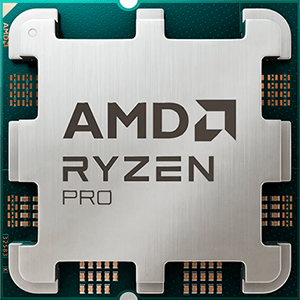AMD Ryzen 7 4700U vs Intel Core i5 1030NG7
We compared two laptop CPUs: AMD Ryzen 7 4700U with 8 cores 2.0GHz and Intel Core i5 1030NG7 with 4 cores 1.1GHz . You will find out which processor performs better in benchmark tests, key specifications, power consumption and more.
Main Differences
AMD Ryzen 7 4700U 's Advantages
Higher specification of memory (4266 vs 3733)
Larger memory bandwidth (68.27GB/s vs 58.3GB/s)
Higher base frequency (2.0GHz vs 1.1GHz)
Larger L3 cache size (8MB vs 6MB)
More modern manufacturing process (7nm vs 10nm)
Intel Core i5 1030NG7 's Advantages
Lower TDP (10W vs 25W)
Score
Benchmark
Cinebench R23 Single Core
AMD Ryzen 7 4700U
+16%
1216
Intel Core i5 1030NG7
1044
Cinebench R23 Multi Core
AMD Ryzen 7 4700U
+76%
7341
Intel Core i5 1030NG7
4167
Geekbench 6 Single Core
AMD Ryzen 7 4700U
+22%
1512
Intel Core i5 1030NG7
1239
Geekbench 6 Multi Core
AMD Ryzen 7 4700U
+77%
5648
Intel Core i5 1030NG7
3183
Blender
AMD Ryzen 7 4700U
+344%
111
Intel Core i5 1030NG7
25
Geekbench 5 Single Core
AMD Ryzen 7 4700U
1125
Intel Core i5 1030NG7
1120
Geekbench 5 Multi Core
AMD Ryzen 7 4700U
+43%
4903
Intel Core i5 1030NG7
3426
Passmark CPU Single Core
AMD Ryzen 7 4700U
+41%
2510
Intel Core i5 1030NG7
1768
Passmark CPU Multi Core
AMD Ryzen 7 4700U
+128%
13373
Intel Core i5 1030NG7
5855
General Parameters
Jan 2020
Release Date
Mar 2020
AMD
Manufacturer
Intel
Laptop
Type
Laptop
x86-64
Instruction Set
x86-64
Zen 2
Core Architecture
Ice Lake Y
-
Processor Number
i5-1030NG7
FP6
Socket
BGA-1377
Radeon Vega 7
Integrated Graphics
Iris Plus Graphics G7 (64 EU)
Package
7 nm
Manufacturing Process
10 nm
10-25 W
Power Consumption
10 W
105 °C
Peak Operating Temperature
100 °C
CPU Performance
8
Performance Cores
4
8
Performance Core Threads
8
2.0 GHz
Performance Core Base Frequency
1.1 GHz
4.1 GHz
Performance Core Turbo Frequency
3.5 GHz
8
Total Core Count
4
8
Total Thread Count
8
100 MHz
Bus Frequency
100 MHz
20x
Multiplier
11x
32 K per core
L1 Cache
48 K per core
512 K per core
L2 Cache
512 K per core
8 MB shared
L3 Cache
6 MB shared
No
Unlocked Multiplier
No
Memory Parameters
DDR4-3200, LPDDR4-4266
Memory Types
LPDDR4-3733
32 GB
Max Memory Size
32 GB
2
Max Memory Channels
2
68.27 GB/s
Max Memory Bandwidth
58.3 GB/s
Yes
ECC Memory Support
No
Graphics Card Parameters
true
Integrated Graphics
true
300 MHz
GPU Base Frequency
300 MHz
1600 MHz
GPU Max Dynamic Frequency
1050 MHz
448
Shader Units
512
28
Texture Units
64
7
Raster Operation Units
8
10-45 W
Power Consumption
15 W
-
Max Resolution
5120x3200 - 60 Hz
1.108 TFLOPS
Graphics Performance
-







